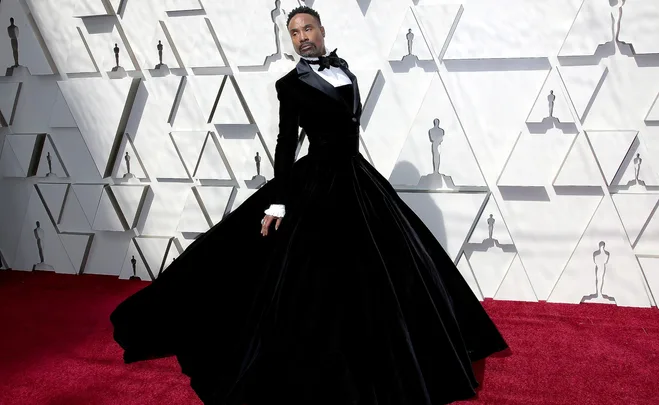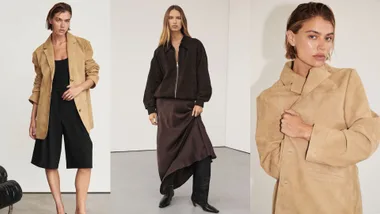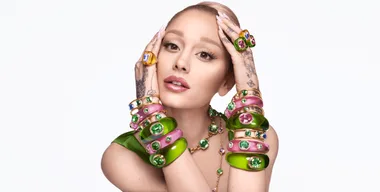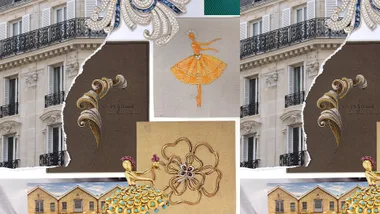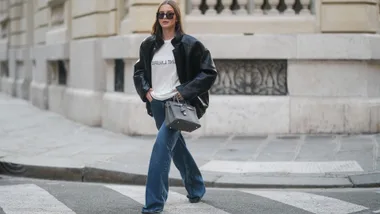Of all the world-changing, heart-breaking and rage-inducing moments of 2020, it was a dress that sent the internet into meltdown.
Pop icon Harry Styles appeared on the cover of a magazine wearing a Gucci gown – a ruffled periwinkle number paired with a cropped tuxedo jacket – and sparked headlines, hero worship and hatred alike. Many applauded his bold statement and flouting of gender norms; others declared that a cisgender, straight white man didn’t deserve to spearhead this cultural conversation; and conservative commentators wept for the patriarchy (“Bring back manly men,” tweeted far-right American pundit Candace Owens).
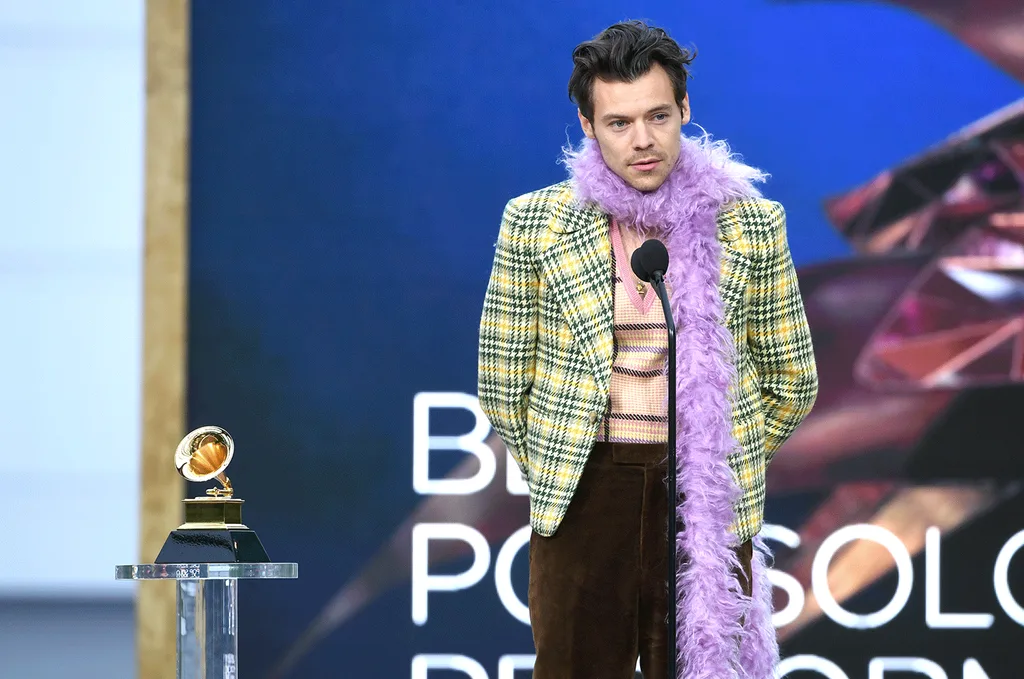
Styles responded by draping himself in feminine frills, feather boas and strings of pearls at every photo opportunity thenceforth.
“I think what’s exciting about right now is you can wear what you like,” he later told a reporter. “It doesn’t have to be X or Y. Those lines are becoming more and more blurred.”
Gender-fluid dressing—breaking the boundaries between clothing traditionally worn by women and men—is nothing new. In Ancient Greece and Rome, everybody wore togas and tunics. In the 1970s and ’80s, performers such as David Bowie, Mick Jagger, Annie Lennox and Grace Jones experimented with gender-bending style; and minority communities—Black, queer, trans and Latinx—have long dressed outside the box, laying the groundwork for today’s movement.
But while Styles’ femme foray wasn’t the first, it was—as he himself once sang—a sign of the times.
In 2020, London Fashion Week went gender-neutral, merging womenswear and menswear into one single showcase. Recent Louis Vuitton collections have seen countless men on the catwalk wearing kilts, dresses and skirts. The house’s late artistic director of menswear, Virgil Abloh, simply described it as a “human approach” to dressing.
Often, the runway reflects real life, and this rapid rise of non-binary fashion into the mainstream coincides with a wider discussion about identity and expression. Namely, what does gender even mean?
“While sex is biologically determined at birth, gender is something that’s socially and culturally constructed,” explains Dr Alexandra Sherlock, lecturer in fashion theory at RMIT University.
“It’s something that we learn. There’s nothing natural or essential about gender.”
Instead, the term refers to how an individual feels and identifies. That might be as a man, as a woman or as non-binary: somewhere on the spectrum in between. It may be fixed or fluid, and it’s separate from sexuality.
The term “non-binary” was officially added to the Collins Dictionary in late 2019, and in 2021 it was introduced to the national census, meaning statistics on non-binary Australians are still unavailable.
An estimated 1.2 million Americans identify as non-binary, although the figure could be much higher. Gender nonconforming people have existed since the beginning of time—Joan of Arc in 15th-century France, and Australia’s First Nations Sistergirls and Brotherboys, who are part of the longest living trans cultures on earth—yet many individuals are only now finding the words to express themselves.
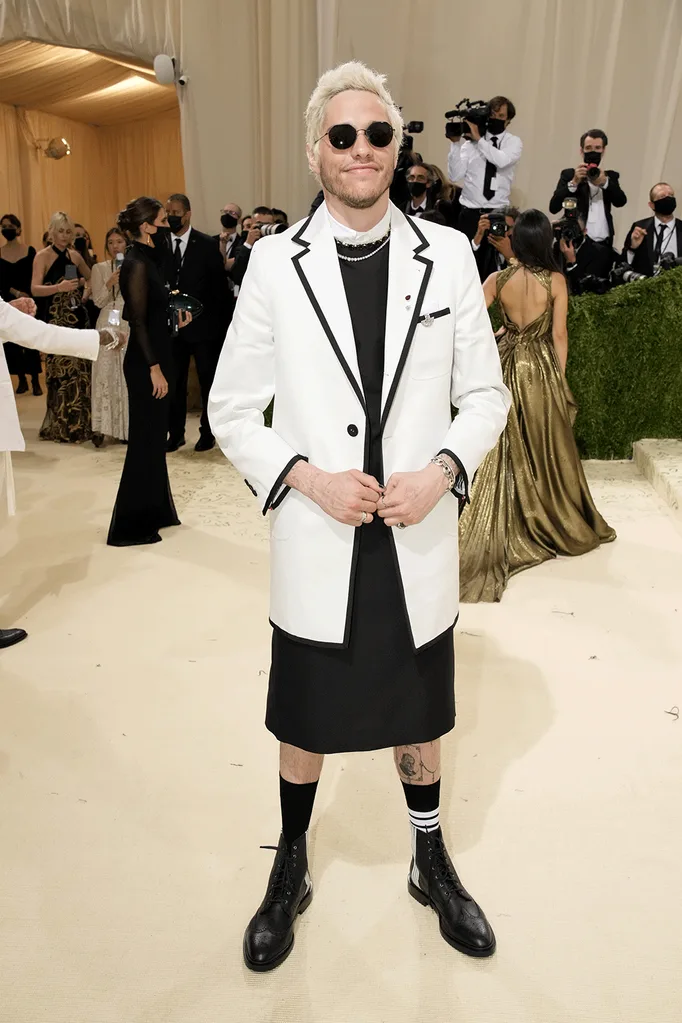
On the red carpet, actor Billy Porter and non-binary Queer Eye host Jonathan Van Ness have led the way in subverting gender norms, turning up in ballooning ball gowns and racy, sheer skirts. Lil Nas X, a queer Black man, is shaking up the hip-hop scene in beaded bodysuits and hot-pink cowboy boots, while rapper Kid Cudi wore a white, floral dress on Saturday Night Live.
Even hetero lothario Pete Davidson, he who inspired “Big Dick Energy”, wore a tunic to the 2021 Met Gala.
Broadening the idea of what it means to be a man—via fashion, in this instance—could even help break the cycle of toxic masculinity.
“In the West, our conception of masculinity is very narrow,” says fashion lecturer Sang Thai, Sherlock’s colleague at RMIT.
In Asian cultures, he continues, there’s a long and rich tradition of men wearing skirts, and these cultures often adopt a more nuanced view of gender, rather than our rigid, polarised and often damaging binaries.
But as gender-fluid fashion takes hold, authenticity will be the greatest challenge.
“The industry has to engage with this in a genuine and meaningful way,” says Sherlock.
“As with [any minority identity or community], you shouldn’t [just] design for them or take inspiration from them. There needs to be opportunities for trans and gender-diverse/non-conforming people to represent themselves – to be included in that story, to be employed and to be in positions of power.”
Whacking a rainbow on a pair of sneakers for Pride Week or advertising a frock for men isn’t enough if a brand isn’t doing the work behind the scenes.
“Does the company have queer employees? Do they have safety guards for trans employees?” asks Deni Todorovič, activist, creative director and co-host of the What Are You Wearing podcast, adding that, in Australia, transgender youth aged 14-25 are 15 times more likely to attempt suicide than the general population.
“Are they working with and donating to queer charities? If not, they’re just capitalising off a minority, and that’s not nice.”
Todorovič points to gender-fluid British-American designer Harris Reed as a leader in the space, but says that locally they shop everywhere from Camilla to Kmart. They’d like to see separate menswear and womenswear sections eradicated in stores, and to “degender fashion at every touchpoint”.
Perhaps Generation Z will lead this binary-busting charge. According to one study, half of that cohort (aged 10 to 25) believe that the gender binary is outdated.
“It’s important to remember that there’ll always be binaries and they’re still part of the same gender spectrum,” notes Sherlock.
“But my Gen-Z students give me hope. They’re thinking about ways they can use fashion for positive social and cultural change, as opposed to reproducing the conventions that have gone before.”
Today, Todorovič feels energised to live a life beyond the binary, in “the space in-between”, as they like to call it.
“For me, degendering fashion is not about erasing another person’s identity, it’s about pulling up a seat at the table so there’s room for all of us. You have to get dressed every day, so why shouldn’t it be fun for everyone?”
Right now, they’re wearing basketball shorts, a Bonds chesty and sneakers, but tonight they’ll throw on a floaty dress and chunky heels. Tomorrow it could either be tailored trousers or a tulle tutu skirt.
“Some people might find that confusing but that’s OK,” they say. “It’s how I feel, it’s who I am.”
This story originally appeared in the February issue of marie claire Australia.
